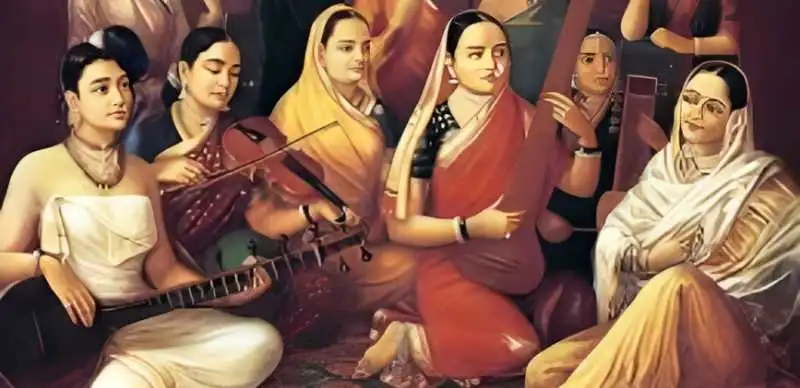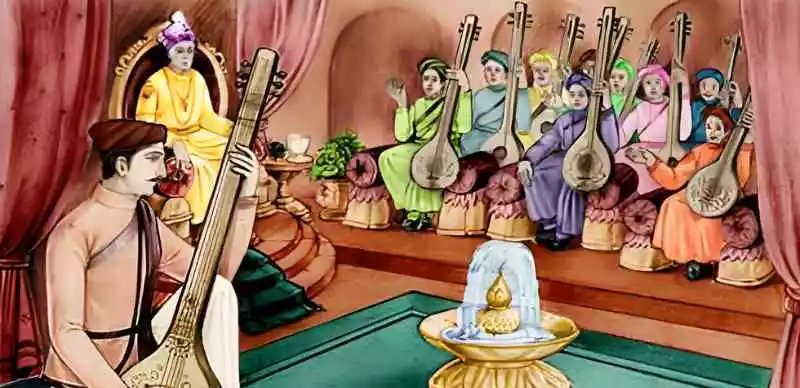Music is the soul of any culture and India has had an extended lifestyle of musical ingenuity. It is stated that Narada Muni (sage) added the art of music to earth. He also taught the inhabitants about the sound that provides the complete universe known as Naada Brahma. Musical instruments like the seven-holed flute and Ravanahatha were recovered from the sites of the Indus Valley Civilization.
We discover the literary lines of tune for the primary time a thousand years ago in the Vedic times. All the seven notes of the raga Kharaharapriya can be found in descending order in the Sama Veda. The technology of track known as the Gandharva Veda is an Upaveda of the Sama Veda. The elements of the instrument Veena are mentioned in Aitareya Aranyak Tie Jaimini Brahmana speaks collectively of dance and tune.
The Kausitaki Brahmana puts dance, vocal, and instrumental music collectively as an art. Musicologists purport theories approximately the phrase 0m being the supply of all ragas and notes. Panini in 500 BCE made the first right connection with the art of making music however the first connection with musical principle turned into mentioned in Bharata’s Natyashastra written and compiled between two hundred BC and 200 AD.
The History of Indian Classical Music

A lot of development in music stemmed from being played at devotional sites. This type of ritualistic music was displayed in the later Vedic period through a type of music called Sangama, which involved the chanting of verses that were usually set to musical patterns.
Even the epics were set to the narrative type of music called the Jatigan. The first work that clarified and elaborated on the subject of musicology was Bharata’s Natyashastra. It contains several important chapters on music, especially the ones that identify the octave and elaborate on its 22 keys.
These 22 keys were recognized as shrutis or srutis. This distinction was made in Dathilam, a text that endorsed the existence of 22 srutis per octave and made the suggestion that maybe these were the only ones that a human body could make. Sarangadeva, a 13th-century musicologist who wrote the classic text on music, the Sangeet Ratnakara, seconded this view.
The Sangeet Råtnakara defined about 264 ragas including some from the North Indian and the Dravidian repertoires. Its greatest contribution was to identify and describe the various ‘microtones’ and classify them into different categories.
Later, some medieval texts on musicology focused on particular themes, for example, Brihaddeshi written in the 9″ century by Matanga focused on the definition of the word ‘raga’.
Similarly, in the 11th-century text, Sangeeta Makaranda was composed of Nanda who enumerated 93 ragas and classified them into feminine and masculine forms. Other important texts of this period Were Swaramela-Kalanidhi written by Ramamatya in the 16th century which again deals primarily with ragas. Chaturdandi-Prakasika written by Venkatamakhin in the 17th century is also famous for important information on musicology.
During the ancient and early medieval periods, we find evidence of the existence of Gurukuls where students lived with the teacher to become a masters in the art of music.
The change in the tenor of music came with the effect of the Persian factors. This Influx of Islamic and Persian factors modified the face of North Indian Music, For example, the Dhruvapad or the devotional fashion of singing patronized with the aid of the rulers converted into the Dhrupad style with the aid of the fifteenth century. By the 17th century, a new shape of the Hindustani tune had evolved which was called the Khayal style. Furthermore, a greater and greater style of ‘folk’ singing emerged in this period.
